-
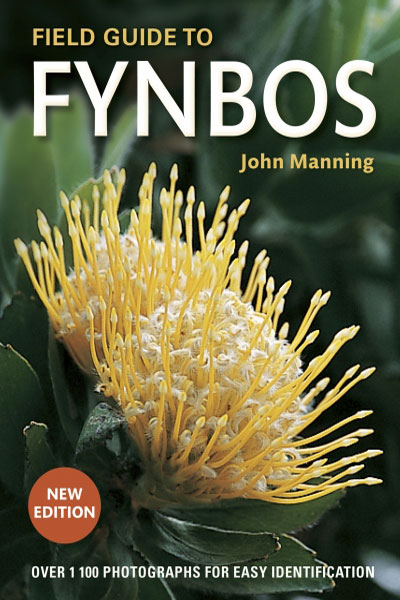 Field Guide to Fynbos features over 1,000 species from the Cape Floristic Region – home to one of the world’s richest floras. This fully updated edition focuses on the most common and ‘showy’ plants. An introduction unpacks the world of fynbos – including origins, diversity, climate, and adaptations and is followed by a photographic key and descriptions of the fynbos families. Species descriptions are accompanied by photographs, distribution maps, comparisons with similar species, and notes on traditional uses.
Field Guide to Fynbos features over 1,000 species from the Cape Floristic Region – home to one of the world’s richest floras. This fully updated edition focuses on the most common and ‘showy’ plants. An introduction unpacks the world of fynbos – including origins, diversity, climate, and adaptations and is followed by a photographic key and descriptions of the fynbos families. Species descriptions are accompanied by photographs, distribution maps, comparisons with similar species, and notes on traditional uses. -
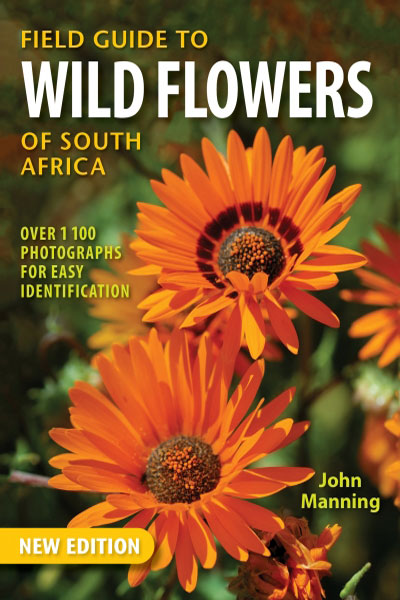 This fully updated edition of Field Guide to Wildflowers of South Africa covers more than 1,100 species of ore, focusing on the most common, conspicuous, and showy plants around the region. An informative introduction discusses plant diversity, vegetation types, and includes a key to identifying plant groups. The species descriptions follow, and each is accompanied by: a vivid photograph; a distribution map showing range, and an indication of the plant.
This fully updated edition of Field Guide to Wildflowers of South Africa covers more than 1,100 species of ore, focusing on the most common, conspicuous, and showy plants around the region. An informative introduction discusses plant diversity, vegetation types, and includes a key to identifying plant groups. The species descriptions follow, and each is accompanied by: a vivid photograph; a distribution map showing range, and an indication of the plant. -
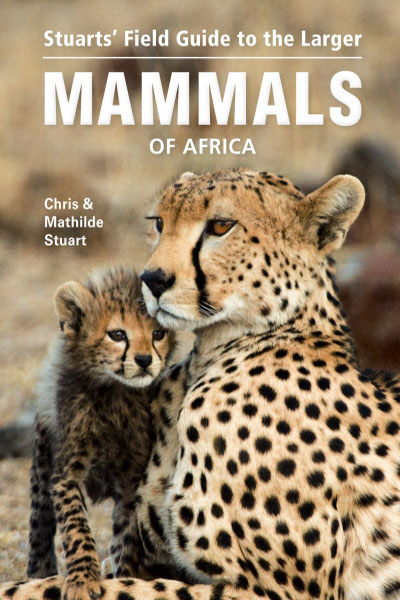 Of the more than 5,500 mammal’s species worldwide, at least 1,200 occur in Africa. Stuarts’ Field Guide to the Larger Mammals of Africa concentrates on the more visible and easily distinguished larger species, as well as some of the more frequently seen smaller mammals. This new edition has been extensively revised, expanded, and redesigned and includes: the most recent research and taxonomy, revised distribution maps and many new images, colour-coded grouping of orders.
Of the more than 5,500 mammal’s species worldwide, at least 1,200 occur in Africa. Stuarts’ Field Guide to the Larger Mammals of Africa concentrates on the more visible and easily distinguished larger species, as well as some of the more frequently seen smaller mammals. This new edition has been extensively revised, expanded, and redesigned and includes: the most recent research and taxonomy, revised distribution maps and many new images, colour-coded grouping of orders. -
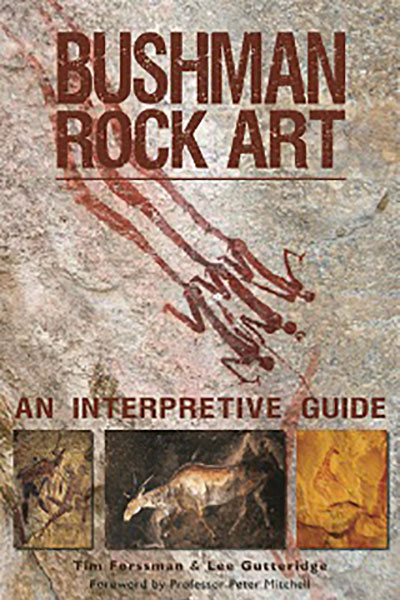 The prehistoric record of southern Africa extends back some 2 million years. The oldest cultural artefacts are stone tools such as hand axes, cleavers, and choppers. In more recent centuries, archaeologists have found an extensive repertoire of artefacts including not only stone tools, but tools of bone, wood and shell as well as beads, jewellery, grinding stones, clothing, fishing equipment, burials and southern Africa's enigmatic rock art.
The prehistoric record of southern Africa extends back some 2 million years. The oldest cultural artefacts are stone tools such as hand axes, cleavers, and choppers. In more recent centuries, archaeologists have found an extensive repertoire of artefacts including not only stone tools, but tools of bone, wood and shell as well as beads, jewellery, grinding stones, clothing, fishing equipment, burials and southern Africa's enigmatic rock art. -
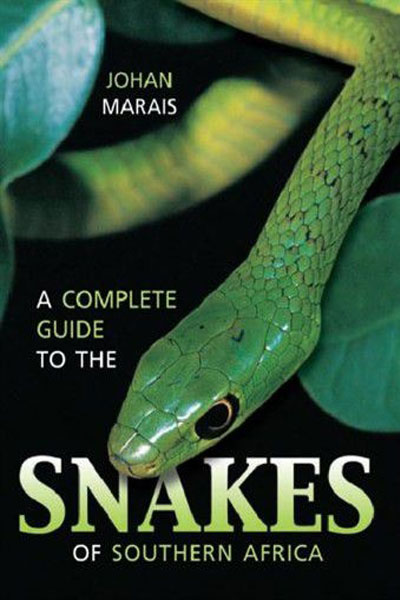 This detailed and comprehensive guide to the 151 snakes indigenous to southern Africa covers all essential aspects of snake biology and behaviour. Now in its second edition, A Complete Guide to the Snakes of Southern Africa has been updated, revised, and expanded to include at least 11 newly discovered and 30 re-classified species and sub-species. New information based on international scientific research has been included in the species accounts relating to behaviour, identification, reproduction, and snake venom.
This detailed and comprehensive guide to the 151 snakes indigenous to southern Africa covers all essential aspects of snake biology and behaviour. Now in its second edition, A Complete Guide to the Snakes of Southern Africa has been updated, revised, and expanded to include at least 11 newly discovered and 30 re-classified species and sub-species. New information based on international scientific research has been included in the species accounts relating to behaviour, identification, reproduction, and snake venom. -
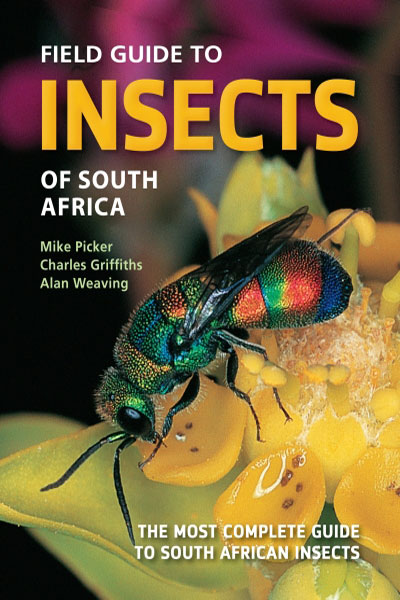 This is an updated and revised edition of the largest, most authoritative field guide to the insect fauna of South Africa, with detailed descriptions and images of some 1,500 of the most common, most economically and ecologically important, and most interesting and attractive insects in the region.
This is an updated and revised edition of the largest, most authoritative field guide to the insect fauna of South Africa, with detailed descriptions and images of some 1,500 of the most common, most economically and ecologically important, and most interesting and attractive insects in the region. -
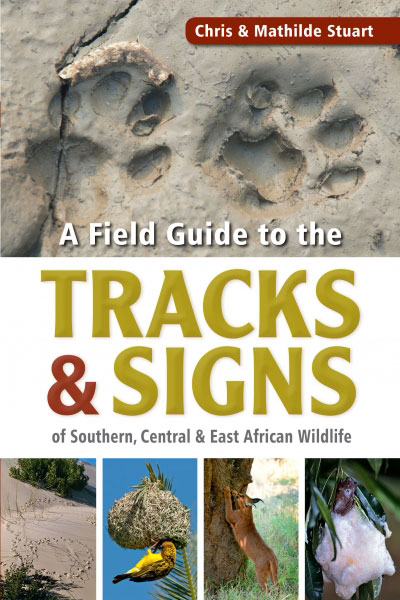 Originally published in 1994, A Field Guide to Tracks and Signs of Southern and East African Wildlife quickly became the standard reference to the subject in the region, reprinting many times. This new edition provides the most detailed coverage of tracks, droppings, bird pellets, nests and shelters and feeding signs, not only for mammals, but also for birds, reptiles, insects, and other invertebrates. Greatly expanded, this extensive update now features full colour throughout.
Originally published in 1994, A Field Guide to Tracks and Signs of Southern and East African Wildlife quickly became the standard reference to the subject in the region, reprinting many times. This new edition provides the most detailed coverage of tracks, droppings, bird pellets, nests and shelters and feeding signs, not only for mammals, but also for birds, reptiles, insects, and other invertebrates. Greatly expanded, this extensive update now features full colour throughout. -
 First published in 1986, Smithers' mammals are an authoritative and popular guide to the mammals of Southern Africa. This revised and updated edition incorporates the latest information brought to light by molecular genetics, while remaining accessible to the layperson and handy in the field. Each entry includes an in-depth species description; notes on habitat, behaviour, diet, and conservation status; accurate illustrations and spoor drawings; and a distribution map.
First published in 1986, Smithers' mammals are an authoritative and popular guide to the mammals of Southern Africa. This revised and updated edition incorporates the latest information brought to light by molecular genetics, while remaining accessible to the layperson and handy in the field. Each entry includes an in-depth species description; notes on habitat, behaviour, diet, and conservation status; accurate illustrations and spoor drawings; and a distribution map. -
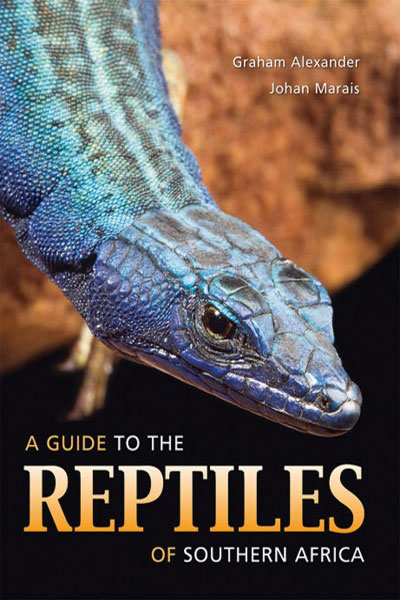 Drawing on the latest scientific research, the authors introduce the book with a discussion of reptile identification, diversity, biology, distribution patterns, and where to find and observe them, as well as unravelling the facts and fallacies of snakebites. Written in a lively and accessible way, the subsequent chapters offer insight into: Identification to group level, with an inclusive list of related species A detailed description of appearance, together with colourful images Biology and behaviour of each group
Drawing on the latest scientific research, the authors introduce the book with a discussion of reptile identification, diversity, biology, distribution patterns, and where to find and observe them, as well as unravelling the facts and fallacies of snakebites. Written in a lively and accessible way, the subsequent chapters offer insight into: Identification to group level, with an inclusive list of related species A detailed description of appearance, together with colourful images Biology and behaviour of each group -
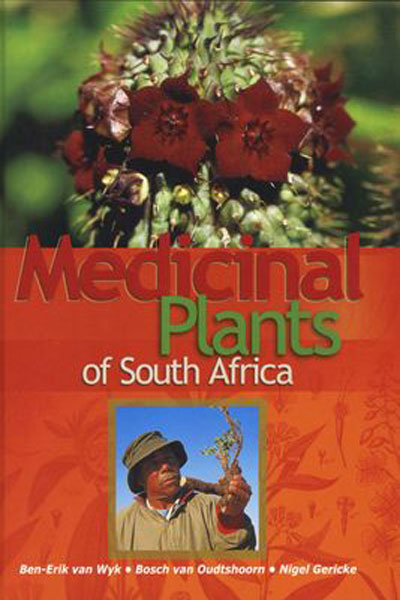 A photographic guide to the most used and best-known South African plant medicines, including their botany, main traditional uses and active ingredients. detailed species descriptions of more than 150 medicinal plants and their close relatives, or other species used in a similar way. Each entry includes the following information: a description of the plant, the plant parts used, medicinal uses, preparation and dosage, active ingredients, and pharmacological effects.
A photographic guide to the most used and best-known South African plant medicines, including their botany, main traditional uses and active ingredients. detailed species descriptions of more than 150 medicinal plants and their close relatives, or other species used in a similar way. Each entry includes the following information: a description of the plant, the plant parts used, medicinal uses, preparation and dosage, active ingredients, and pharmacological effects. -
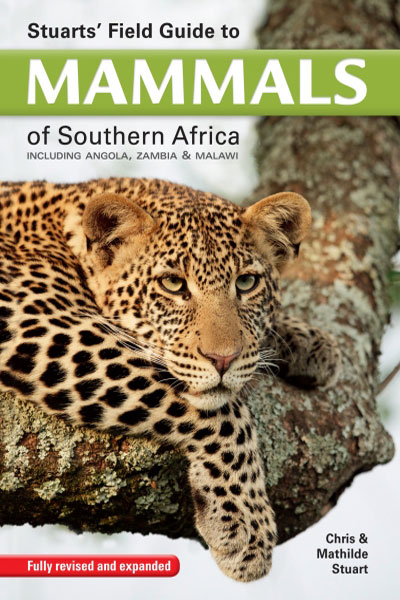 Greater southern Africa has a wealth of mammal species, almost 400 – all of which are covered in this fully updated, comprehensive field guide. Now expanded to include species found in Angola, Zambia, and Malawi, it has also been extensively revised to include: the most recent research and taxonomy, revised distribution maps and many new images.
Greater southern Africa has a wealth of mammal species, almost 400 – all of which are covered in this fully updated, comprehensive field guide. Now expanded to include species found in Angola, Zambia, and Malawi, it has also been extensively revised to include: the most recent research and taxonomy, revised distribution maps and many new images. -
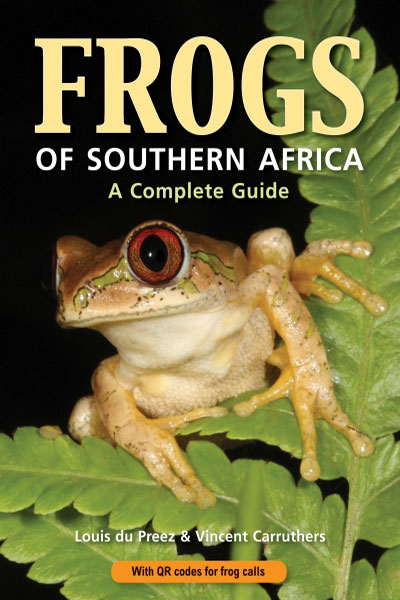 This new edition (with a slight name change) has been thoroughly updated to reflect taxonomic changes based on the most recent research and DNA studies and includes 12 new species and more than 130 new images. All 169 southern African frog species, and their tadpole stages, are fully described, along with their conservation status, calls, habitat, and habits.
This new edition (with a slight name change) has been thoroughly updated to reflect taxonomic changes based on the most recent research and DNA studies and includes 12 new species and more than 130 new images. All 169 southern African frog species, and their tadpole stages, are fully described, along with their conservation status, calls, habitat, and habits. -
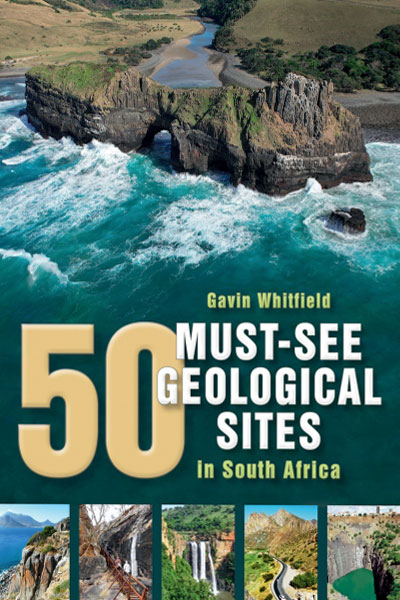 The book presents 50 of the most recognizable and geologically interesting sites around South Africa, including some of palaeontological or historical renown and some of mining interest. The diverse selection includes sites such as Chapman’s Peak, Howick Falls, Walter Sisulu National Botanical Gardens, Mapungubwe, Tswaing Meteorite Crater and the Fraserburg Fossil Surface.
The book presents 50 of the most recognizable and geologically interesting sites around South Africa, including some of palaeontological or historical renown and some of mining interest. The diverse selection includes sites such as Chapman’s Peak, Howick Falls, Walter Sisulu National Botanical Gardens, Mapungubwe, Tswaing Meteorite Crater and the Fraserburg Fossil Surface. -
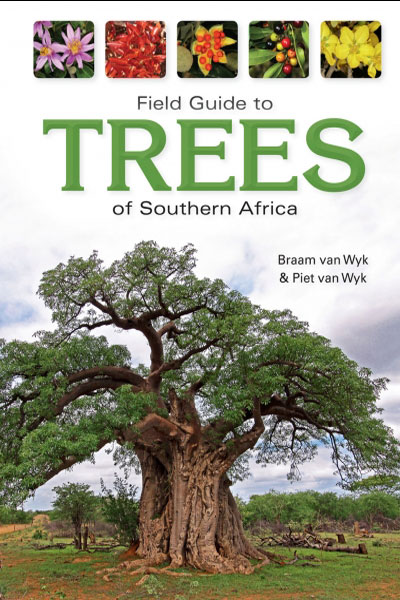 This comprehensively updated and expanded edition of the region’s best-selling field guide to trees offers much, much more than the highly successful first edition. Fully updated text (including additional species entries) and distribution maps, numerous new photographs and a new 87-page section of full-tree photographs makes this well-loved guide even more indispensable in the field.
This comprehensively updated and expanded edition of the region’s best-selling field guide to trees offers much, much more than the highly successful first edition. Fully updated text (including additional species entries) and distribution maps, numerous new photographs and a new 87-page section of full-tree photographs makes this well-loved guide even more indispensable in the field. -
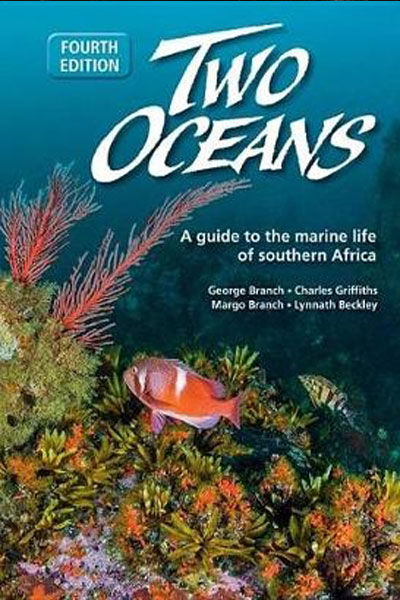 For over two decades Two Oceans has been the pre-eminent book to which scientists, students, divers, and beachcombers turn to identify and learn about marine life, from sponges to whales and seaweeds to dune forests. In this exuberantly colourful, fully revised fourth edition, over 2 000 species are now covered, names and other details have been updated to reflect the latest taxonomy and many new photographs have been added.
For over two decades Two Oceans has been the pre-eminent book to which scientists, students, divers, and beachcombers turn to identify and learn about marine life, from sponges to whales and seaweeds to dune forests. In this exuberantly colourful, fully revised fourth edition, over 2 000 species are now covered, names and other details have been updated to reflect the latest taxonomy and many new photographs have been added. -
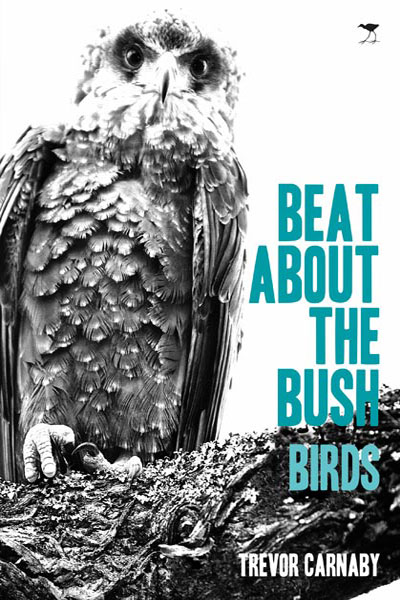 Revealing fascinating insights into the mysterious lives of bird’s native to the mother continent, this remarkable guide exhibits the many vibrantly colourful species found in the South African bush. Providing an in-depth discourse on all aspects of bird life--detailing their myriad forms, survival strategies in a harsh landscape, breeding and feeding behaviours, movements, migrations, preferred habitat, unique behavioural patterns, and vocalizations--this comprehensive manual also expertly advises on how to easily and accurately identify each individual species.
Revealing fascinating insights into the mysterious lives of bird’s native to the mother continent, this remarkable guide exhibits the many vibrantly colourful species found in the South African bush. Providing an in-depth discourse on all aspects of bird life--detailing their myriad forms, survival strategies in a harsh landscape, breeding and feeding behaviours, movements, migrations, preferred habitat, unique behavioural patterns, and vocalizations--this comprehensive manual also expertly advises on how to easily and accurately identify each individual species.
